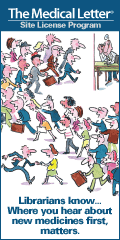

MLA Position Statements and FAQs
Interlibrary Loan FAQ
This document on interlibrary loan is intended as a guide to assist librarians in their practice. It is based on the ideas and interpretations of the authors in their capacity as librarians and does not purport to be a legal statement or to serve as legal advice. Because of the nature of the subject matter, in which legal rights and liabilities often are dependent upon the specific facts and circumstances involved, readers are encouraged to consult with competent legal counsel as appropriate.
 What is interlibrary loan?
What is interlibrary loan?
Interlibrary loan refers to the process of borrowing publications or obtaining surrogates of publications library to library on behalf of library patrons. The U.S. Copyright Law (17 United States Code Section 101 et seq.) gives the owner of the copyright in a work the exclusive rights to reproduce and distribute works (among other rights). The Copyright Law provides for limitations on these exclusive rights, however. The two limitations most relevant to libraries and archives are Section 107 which allows individuals a fair use of a work for specific purposes, and Section 108 which permits libraries and archives to reproduce materials for other libraries through interlibrary loan.
 What is fair use?
What is fair use?
Fair use is one of the limitations on the exclusive rights of the copyright holder as specified in Section 107 of the Copyright Law. Fair use is the provision within the law that allows use of a copyrighted work for purposes such as criticism, comment, news reporting, teaching (including multiple copies for classroom use), scholarship and research. Fair use relates to the purpose for which the individual is requesting the material.
Section 107 lists four factors in determining whether the use made of a work is a fair use:
- the purpose and character of the use, including whether it is of a commercial nature or is for non-profit educational purposes;
- the nature of the copyrighted work;
- the amount and substantiality of the portion used in relation to the work as a whole;
- the effect of the use on the potential market for the work.
The third factor is an important one in the context of interlibrary loan. Some guidance for libraries is given in Section 108 of the law and in the CONTU Guidelines.
 What are the limitations on what libraries can copy or distribute?
What are the limitations on what libraries can copy or distribute?
Section 108 of the Copyright Law gives libraries and archives the right to reproduce no more than one copy or phonorecord of a work or to distribute such copy or phonorecord under the conditions specified by this section. Section 108 also stipulates that the copy must be made without any purpose of direct or indirect commercial advantage; the library must be open to the public (or at least to other persons doing research in a specialized field); and the reproduction must include a notice of copyright.
A library may not use any exclusion under Section 108 to produce multiple copies of items, or to request and receive copies to avoid subscribing to or purchasing a copyrighted work. In addition, Section 108 typically does not apply to musical work, a pictorial, graphic or sculptural work, or a motion picture or other audiovisual work.
 What are the CONTU Guidelines?
What are the CONTU Guidelines?
The CONTU [Commission on New Technological Uses of Copyrighted Works] Guidelines were developed to assist librarians and copyright owners in understanding the amount of interlibrary loan photocopying permitted under the Copyright Law. The CONTU Guidelines provide the following help in interpreting the law:
Subsection 108(g)(2) of the Copyright Law provides, "The rights of reproduction and distribution under this section extend to the isolated and unrelated reproduction or distribution of a single copy or phonorecord of the same material on separate occasions, but do not extend to cases where the library or archives, or its employee... engages in the systematic reproduction or distribution of single or multiple copies or phonorecords of materials described in subsection (d): Provided, that nothing in this clause prevents a library or archives from participating in interlibrary arrangements that do not have, as their purpose or effect, that the library or archives receiving such copies or phonorecords for distribution does so in such aggregate quantities as to substitute for a subscription to or purchase of such work."
CONTU defines that clause to mean that requesting and receiving more than five articles from a given periodical within any calendar year for a total of six or more copies of articles published within five years prior to the date of request would be too many.
CONTU does not give any guidance to libraries for copying material older than five years.
CONTU specifies that if a library has in force or has entered a subscription for a periodical, but it is not immediately available, the library may consider the copy obtained from another library as if made from its own collection.
CONTU stipulates that all interlibrary loan requests must be accompanied by a copyright compliance statement by the requesting library.
CONTU stipulates that the requesting library must maintain records of all requests and of the fulfillment of these requests. The records must be retained for three complete calendar years after the end of the calendar year in which the requests were made.
 What does copyright compliance mean?
What does copyright compliance mean?
In requesting an item through interlibrary loan, the library must indicate whether the copy is for an article from a periodical published within the last five years and therefore covered by the CONTU Guidelines [CCG], or from material generally covered by the Copyright Act [CCL]. Using one of these symbols indicates that the requester understands and is in compliance with the Copyright Law and guidelines.
 Who is responsible for keeping track of copies requested?
Who is responsible for keeping track of copies requested?
The requesting library must maintain records of all interlibrary loan requests, including whether they were filled, for three full calendar years after the requests were made.
 Most people are familiar with the five articles from the last five
years of a given title in a given calendar year rule. Is this truly a
guideline, or should it be treated as a rigid rule?
Most people are familiar with the five articles from the last five
years of a given title in a given calendar year rule. Is this truly a
guideline, or should it be treated as a rigid rule?
This is one of the CONTU guidelines designed to assist librarians in adhering to the Copyright Act of 1976. The guidelines are not law, but a suggestion to assist librarians in following the law. Only the courts can authoritatively determine whether a particular use is permissible within the law; however, the more one exceeds the guidelines, the greater the risk that the use is not permitted within the Copyright Law.
 What are some other options when I need to request a sixth article from
a journal within the past year?
What are some other options when I need to request a sixth article from
a journal within the past year?
There are several options. You may seek permission directly from the copyright owner, who may or may not require payment of a fee in order to grant your request. You may enter a subscription for the journal, in which case you may request articles from other libraries until you begin to receive your subscription. You may request the article from a library, but make a copyright payment to the Copyright Clearance Center (CCC) if the journal is registered with the CCC. You may also obtain a copy from a document delivery service that will obtain copyright clearance for you.
 In following the CONTU guidelines, do we count requests for titles to
which we currently subscribe when the issue needed is at the bindery or
not yet received?
In following the CONTU guidelines, do we count requests for titles to
which we currently subscribe when the issue needed is at the bindery or
not yet received?
Such requests would not need to be counted in the rule of five.
 Do we count requests for titles to which we currently subscribe when the
issue is missing, or the article is from an earlier volume which we do
not own? In other words, is it necessary not only to subscribe to the
journal, but to make a reasonable effort to purchase back or missing issues?
Do we count requests for titles to which we currently subscribe when the
issue is missing, or the article is from an earlier volume which we do
not own? In other words, is it necessary not only to subscribe to the
journal, but to make a reasonable effort to purchase back or missing issues?
Probably not. Obtaining copies of articles from back issues is generally considered a kind of reward for placing a current subscription.
 What does it mean for something to be in the public domain?
What does it mean for something to be in the public domain?
A work that is in the public domain is one for which no copyright is held, thus it can be freely used, copied, or distributed by anyone. A work may be in the public domain because the copyright may have expired or been abandoned at time of renewal, or an author may have simply placed the work in the public domain. Under the current term of copyright protection, everything published before 1920 within the scope of the U.S. Copyright Law is now in the public domain.
The works produced by the U.S. Federal Government are not eligible for copyright protection in the United States, and are therefore in the public domain. This includes any book or journal article published by a Federal government employee as part of his/her work. These publications may be copied without limitation for interlibrary loan.
 Are all government publications in the public domain?
Are all government publications in the public domain?
No, though in addition, most U.S. Federal Government publications are in the public domain, those publications based upon rights transferred to the U.S. Government by others may very well be protected by copyright. State and local governments may hold copyright.
 Can a for-profit library request an article through ILL?
Can a for-profit library request an article through ILL?
A request by a library in a for-profit setting is not necessarily infringement. Other criteria in Section 108 apply.
 Can I freely copy something that is out-of-print?
Can I freely copy something that is out-of-print?
No. Section 108 requires that the library make a reasonable effort to obtain a copy of an item at a fair price. A library requesting that a copy of a whole work be made for interlibrary loan because the item is out-of-print should indicate that an effort has been made to purchase a copy.
 Can I copy an audiovisual work rather than loan it through interlibrary
loan?
Can I copy an audiovisual work rather than loan it through interlibrary
loan?
Only if such copyright would be a permissible fair use under Section 107. Section 108 of the Copyright Act, which provides an exemption for libraries to reproduce materials under certain circumstances, does not apply to motion pictures or other audiovisual works. A library may lend an audiovisual work through interlibrary loan, but may not copy it for the requesting library under Section 108.
 May I lend computer software to another library?
May I lend computer software to another library?
Under section 109 of the Copyright Act a non-profit library may lend software, provided the library places on the software packages the Software Warning Notice: Warning of Copyright Restrictions promulgated by the Register of Copyrights. Libraries in the for-profit sector may not lend software without either a license agreement or express permission from the holder of the copyright in the program.
 Can a library scan an article to transmit it to another library rather
than mail it?
Can a library scan an article to transmit it to another library rather
than mail it?
Libraries should follow the same practices with scanners as for other reproduction equipment (photocopiers, fax machines). The scanned article should carry the notice of copyright and the library providing the copy must not retain a copy of the article.
 Are there special considerations for interlending with libraries outside
of the United States?
Are there special considerations for interlending with libraries outside
of the United States?
It is not possible for a librarian to know the copyright laws of every country. Librarians should treat ILL requests from other countries for U.S. works as they would treat requests from other U.S. libraries, adhering to the U.S. Copyright Act.
 Author
Author
Prepared January 1997
Eve Marie Lacroix, Chief, Public Services Division, National Library
of Medicine;
Ellen Nagle, Director, Bio-Medical Library, University of Minnesota;
and
Beverlee French, Assistant University Librarian-Science, Shields
Library, University of California-Davis.
For more information, contact Mary Langman, 312.419.9094 x27.
Medical Library Association
312.419.9094
info@mlahq.org
© 1999-2008 Medical Library Association
Send site questions/comments to systems administrator
Last Updated: 2007 July 13
www.mlanet.org/government/positions/illfaq.html





